The use of steel in the multi-storey building sector is based on tangible, client-related benefits including the ability to provide column-free floor spans; efficient circulation space; integration of building services, and the influence of the site and local access conditions in the construction process. For centre city projects speed of construction and minimum storage of materials on-site require a high level of pre-fabrication, which steel-framed systems accommodate easily.
In many large commercial buildings, a two-stage construction process means that the tenant is responsible for the servicing and fit-out, and so the building structure has to be sufficiently flexible to cope with these differing requirements. Many smaller buildings are designed for natural ventilation and with a high proportion of renewable energy technologies built into them.
Steel offers simple solutions to all these requirements.
Speed of construction
Most steel structures are fabricated in the workshop so that the components can be erected on site rapidly. Short construction periods lead to savings in site preliminaries, earlier return on investment and reduced interest charges. Time-related savings can easily amount from 3 to 5% of the overall project cost, reducing the client’s requirements for working capital and improving cash flow. In many inner city projects, it is important to reduce disruption to nearby buildings and roads. Steel construction dramatically reduces the impact of the construction operation on the locality.
Flexibility and adaptability
Long spans allow internal spaces to be arranged to suit open plan offices, different layouts of cellular offices and variations in office layouts throughout the height of the building. Where integrated beam construction is used, the flat soffit gives complete flexibility of layout allowing all internal walls to be relocated, leading to fully adaptable buildings.
Sustainability
Many of the intrinsic properties of steel in construction have significant environmental benefits which include:
- A steel structure is 100% recyclable, repeatedly and without any degradation.
- The speed of construction and reduced disruption minimise the environmental impact on the site.
- The flexibility and adaptability of steel structures maximise the life cycle of the building as it can accommodate radical conversions if the purpose of the building changes.
The SAISC continues to provide an advisory service for multi-storey steel framed buildings. We have done extensive research on the subject and learned a lot from our international peers to re-introduce it as the material of choice when it comes to multi-storey buildings.
We are looking forward to the introduction of the SAISC modular building system which will be an innovation in the application of structural steel. The combination of heavy structural framing and light steel curtain walls and interior framing will be a game changer in future.
Progress and innovation are taking place. The SAISC has been providing design guidance on multi-storey steel frame buildings and have started to introduce a series of courses covering new innovations in integrated one step fire and structural design. Huge advances have made over the years and we believe that there will be many more buildings going up in steel. WATCH THIS SPACE!






